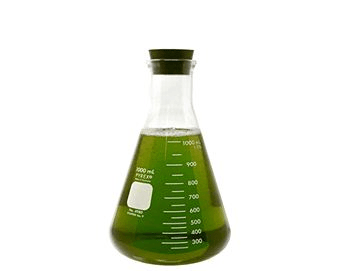BIOCHEMICAL AND HISTOPATHOLOGICAL EFFECTS OF HYDROETHANOLIC EXTRACT OF IRVINGIA WOMBOLU KERNELS ON RAT LIVER AND KIDNEY
Keywords:
Biochemical, histopathological, Irvingia wombolu, liver, toxicityAbstract
Objective: Many plants are consumed as food by humans for growth and survival, but a large number of these plants have not been tested for toxicity potential. Repeated consumption of such plants could lead to accumulation of toxic chemicals in the body and cause health-related problems. Irvingia wombolu kernel is widely consumed by many ethnic groups in Nigeria and some other African countries. The toxicity potentials of Irvingia wombolu kernel extract (IWKE) on the kidney and liver of rats was evaluated in this study.
Methods: Three groups of Wistar rats were fed orally with IWKE (50, 100, and 200 mg/kg b.w) daily for 28 days. The fourth group which is the control was treated with distilled water (10 ml/kg b.w) for the same period. The rats were sacrificed on the 29th day, and blood samples, kidney and liver were harvested for analyses. Serum levels of alanine aminotransferase (ALT), aspartate aminotransferase (AST), total protein, albumin, bilirubin, creatinine, and urea were determined. Kidney and liver sections were examined for histopathological changes. Data were subjected to Student’s t-test for statistical analysis.
Results: Serum levels of creatinine and urea were not significantly altered in the IWKE-treated rats compared with the control. At 200 mg/kg b.w, the extract significantly increased (p<0.05) serum levels of ALT, AST, total bilirubin, total protein, and albumin compared with the control. Significant distortions were observed in the liver sections of rats treated with 200 mg/kg b.w IWKE compared with control, but the structure of the kidney section of IWKE-treated rats was not significantly different from the control.
Conclusion: The results showed that repeated ingestion of Irvingia wombolu kernel at a dose of 200 mg/kg b.w for 28 days induced liver damage, but does not significantly affect renal function.

Peer Review History:
Received: 4 August 2021; Revised: 9 September; Accepted: 12 October; Available online: 15 November 2021
Academic Editor: Dr. Ali Abdullah Al-yahawi , Al-Razi university, Department of Pharmacy, Yemen, alyahawipharm@yahoo.com
, Al-Razi university, Department of Pharmacy, Yemen, alyahawipharm@yahoo.com
Reviewers:
 Dr. Sangeetha Arullappan, Universiti Tunku Abdul Rahman, Malaysia, sangeetha@utar.edu.my
Dr. Sangeetha Arullappan, Universiti Tunku Abdul Rahman, Malaysia, sangeetha@utar.edu.my
 Ahmad Najib, Universitas Muslim Indonesia, Makassar, Indonesia, ahmad.najib@umi.ac.id
Ahmad Najib, Universitas Muslim Indonesia, Makassar, Indonesia, ahmad.najib@umi.ac.id
 Taha A.I. El Bassossy, Medicinal and Aromatic Plants Department, Desert Research Center, Cairo, Egypt, tahachemist2008@gmail.com
Taha A.I. El Bassossy, Medicinal and Aromatic Plants Department, Desert Research Center, Cairo, Egypt, tahachemist2008@gmail.com
 Dr. Nazim Hussain, North East Frontier Technical University, Arunachal pradesh, India, nhussain116@gmail.com
Dr. Nazim Hussain, North East Frontier Technical University, Arunachal pradesh, India, nhussain116@gmail.com
Downloads

Published
How to Cite
Issue
Section

This work is licensed under a Creative Commons Attribution-NonCommercial 4.0 International License.









 .
.